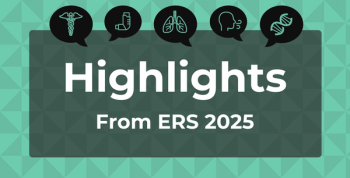
Neurofeedback for Pain Relief: Not Enough Data Yet, Review Says
High-quality research is needed to generate evidence to back neurofeedback for pain management, a recent review says.
Is neurofeedback effective for chronic pain? A
Neurofeedback (NF), a noninvasive and nondrug therapy, is typically performed by measuring brain activity through an electroencephalogram (EEG) and less often by functional magnetic resonance imaging (fMRI). EEGs have shown that people with chronic pain have different brain activity patterns than people without pain.
In NF, the changes in the brain patterns are delivered back to the patient, ostensibly so that they can learn what triggers their pain.
This review examined the different types of protocols evaluated for the use of NF pain management as well as different levels of evidence for those protocols. It also looked at the evidence for NF in improving pain outcomes and if changes in brain activity are linked with improvements in pain.
The researchers kept the inclusion criteria broad, referring to all neurofeedback types and pain conditions in Pubmed, Ovid, Embase, Web of Science, and PsycINFO. Of 6552 citations, 24 were included in the review.
The majority of the studies were of moderate quality; while most included a control group, a minority (29%) included a follow-up period. Half of the studies were carried out in the United States, 17% in Germany, and the remainder in other countries.
Two studies were case series; the sample sizes in the studies that were not case series ranged from 7 to 71. In addition, most (79%) were nonrandomized trials. Just 3 were randomized controlled trials.
Twenty-one percent of the studies focused on headaches, followed by conditions such as fibromyalgia, spinal cord injuries, and other pain conditions. Most outcomes focused on pain intensity (83%), pain frequency, and other variables.
Most studies (79%) used EEG-based NF, of which the researchers described 4 types:
Brain oscillation power-based NF, which aims to “normalize” brain oscillation activity via different bandwidths from electrodes placed on the scalp. This is the most common type of NF, but the authors were unable to find a standard protocol for this treatment, although they said they were all very similar.
Surface Z-score NF and LORETA Z-score NF, which uses a functional imaging procedure called LORETA to estimate EEG bandwidth activity in intercranial brain regions.
Event related potential NF, which attempts to alter how the brain responds to stimuli at specific time points after a triggering cognitive, sensory, or motor event.
Real-time fMRI NF sees a patient trained to regulate brain activity in areas believed to be involved in pain perception and regulation.
Given what the authors called a “lack of consistency” in protocols, there is not enough of an evidence base upon which any conclusions can be drawn about this type of therapy pain management. While there is promise about its potential, there is a continuing need for better research, they said.
Reference
Roy R, de la Vega R, Jensen MP, Miró J. Neurofeedback for pain management: a systematic review. Front Neurosci. Published online July 16, 2020. doi:10.3389/fnins.2020.00671
Newsletter
Stay ahead of policy, cost, and value—subscribe to AJMC for expert insights at the intersection of clinical care and health economics.













































